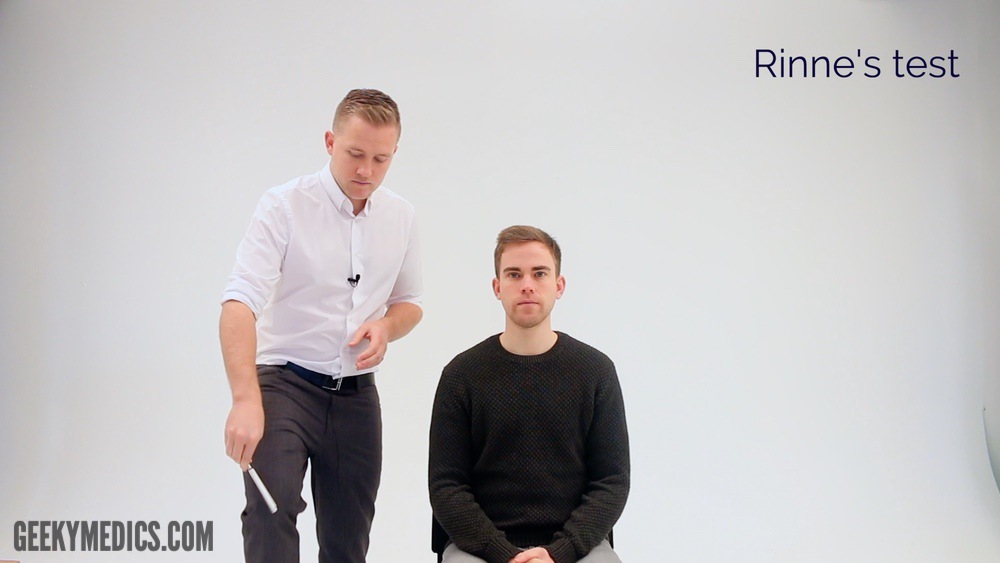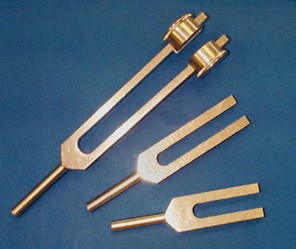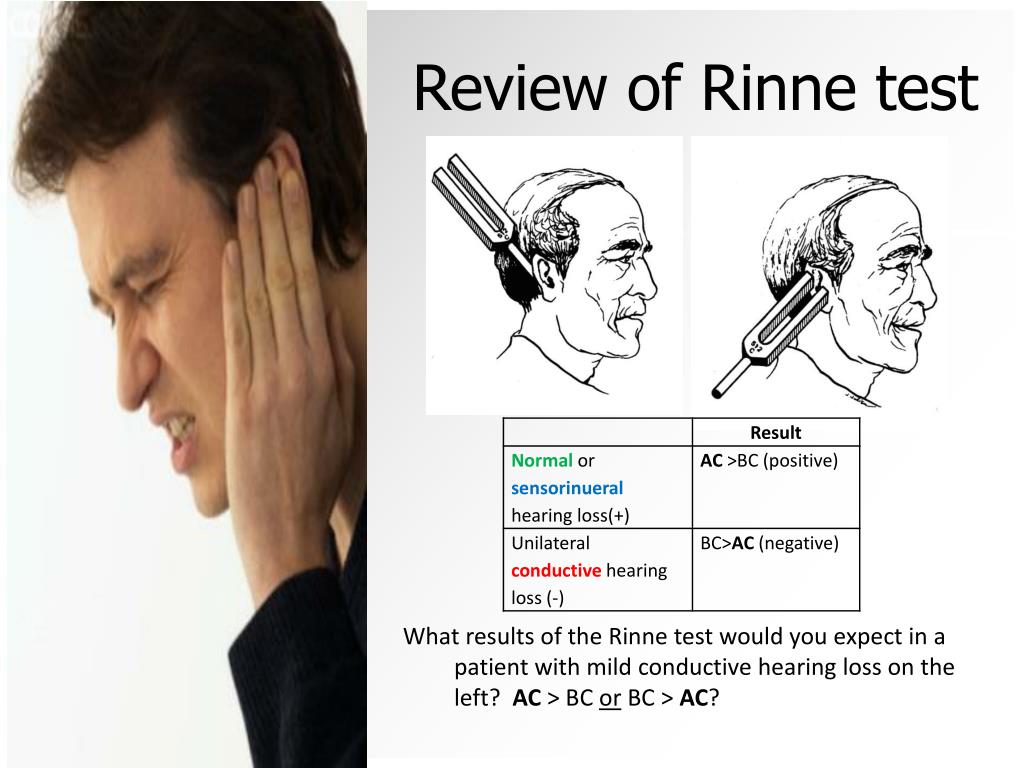

The outer and middle ear mediate conductive hearing. The test can detect unilateral conductive and sensorineural hearing loss. The Weber test is a useful, quick, and simple screening test for evaluating hearing loss. With unilateral sensorineural loss, sound lateralizes to the normal or better-hearing side. With unilateral conductive loss, sound lateralizes toward affected ear. In a normal test, there is no lateralization of sound. Weber test: Place the base of a struck tuning fork on the bridge of the forehead, nose, or teeth.

Place the vibrating tuning fork on the middle of the patient’s head.The Weber test is used to determine a patient’s hearing ability by bone conduction and is useful in detecting a unilateral (one-sided or asymmetrical) conductive hearing loss and unilateral sensorineural hearing loss. Weber’s test is a quick hearing test that is performed with Rinne’s test.

Positive Hearing Loss or “Reversed Rinne”: When a patient hears a louder and longer tone when the vibrating tuning fork is held against the mastoid bone than when it is held next to the ear. Normal: A patient with normal hearing will hear the tone of the vibration longer and louder when the tuning fork is held next to the ear than that against the mastoid bone. The patient is asked whether the sound is louder behind or in front – referring to bone and air conduction respectively.After the sound is no longer appreciated the vibrating top is held one inch from the external auditory meatus.Ask the client to tell you when the sound is no longer heard.Place the vibrating tuning fork on the base of the mastoid bone.Strike a 512 Hz tuning fork softly (knees or elbows slightly not the table) otherwise the vibrations will be excessive and cause the patient discomfort.Sit the patient in a chair comfortably.Explain the procedure to the patient to promote cooperation.To evaluate a patient’s hearing ability by air conduction compared to that of bone conduction. It should always be accompanied by a Weber’s test that is used to detect a sensorineural hearing loss, confirming the nature of hearing problem. Rinne’s test is a hearing test that compares the perception of sounds as it compares the patient’s ability to hear a tone conducted via air and bone through the mastoid process.


 0 kommentar(er)
0 kommentar(er)
